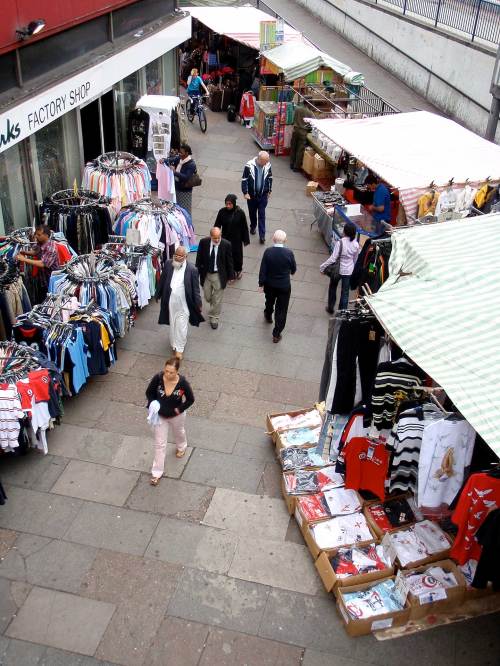
The Mall in all it's glory
You wanted it . . . you got it.
The most popular posting on this blog has nothing to do with Brooklyn Obama Art Culture or even Planet Toronot but . . . .
The Elephant and Castle Shopping Mall.

helpful orientation map at Walworth Rd. entrance
Britain’s oldest indoor mall, like the Heygate Estate behind it, is part of an earlier regeneration scheme for the Elephant Castle, which had been devastated during WWII. The mall , like the Heygate Estate and pretty much everything else in the Elephant, is slated for demolition to make way for another attempt at ‘regeneration’, though the mall likely won’t be torn down until 2012 – at the earliest.
It’s easy to hate the mall, and up until a couple of years ago I basically did. In the late 80’s, it was depressing, and the tunnels that fed into it from the nightmare roundabout were not just depressing but sometimes even dangerous. Packs of kids hung around the mall, especially on the upper levels, along with more than a few drunks. The few cafes were dingy, served terrible food; the garish reds and pinks, the muzak, the vandalized phone boxes, made it seem like some awful caricature of the malls I’d left behind in North America.
Perhaps it was just familiarity, even sentimentality, but eventually . . . while I can’t say I came to love it , I had to admit a sneaking affection came over me when I lived on the neighboring Heygate a year ago.
Columbians had taken over many of the stores on the upper level. They served great coffee, and you could sit and watch the waves of pedestrians in and out of the concrete terminal of the neighboring train station. There are two kiosque type places, and La Bodeguita, a Columbian restaurant with big glass windows that plays Columbian music out into the mall, offsetting the muzak classical drifting from the ceiling . . .

Cafe on second floor
Underneath the railway arches, where there’d been the original raver’s clubs back in the 80’s, were more cafes with more good coffee and that rarity of rarities in London: good, cheap food. They also have South American music, films. Nice place to hang out for a half hour or so. Up the street was a bike shop, with the bikes stacked up outside.

Columbian Cafe underneath Railway arches
The Charlie Chaplin pub had been taken over by squat Latin American men with profiles straight out of the great Mayan frescoes. The first time I went in, I thought I was hallucinating and that I was back in New York.

The Elephant's most famous native son
The murals. The kids breakdancing on thursday (or was it wednesday) evenings, inhabiting the airport lounge space on the second level, almost out of sight as you went by for the train. The great used booksellers on the lower level (I never had the money to actually buy any books, but that’s London for you). The Chinese Herbal medicine place by the 2nd floor entrance advertising remedies for ‘man problem’.

Pink elephants racing through the mall
And the market, open most days, running through the concrete cavern next to the mall. ‘Cheap and cheerful’ clothes, some electronics – mostly junk by and large. But I’d stop at the fruit and veg market just beside the ground floor entranceon the way home. For London, it was almost cheap and the young South Asian guys who ran it were always friendly, a welcome pause after the frenzied, usually alienating ride home.

Market on a weekday afternoon
Curiously the Super Bowl was still in use. I didn’t know people still bowled in the Elephant or anywhere else, but on the weekends and evenings, I’d see families going up and down the escalators. There was some sort of patio bar place on the roof behind the Super Bowl and there always seemed to be people out in the evenings, even in winter . . .

Entrance to the Super Bowl on the airport lounge upper leve
The mall is decrepit certainly, but it’s that very decrepitude allows people like the Columbians, the market, the used booksellers to flourish. Once it’s gone, the Elephant will look just like any other part of London – that is to say, homogenized, gentrified – and boring. If they do blow up the Heygate this summer and, as expected, not have the money to put up anything in it’s place, how will the mall be in one year, two years time? What will happen to the booksellers, Columbians, the South Asians in the market? Whither the Elephant?
For more (and continuous) posts about the Elephant, please visit my other blog: livefromtheheygate









